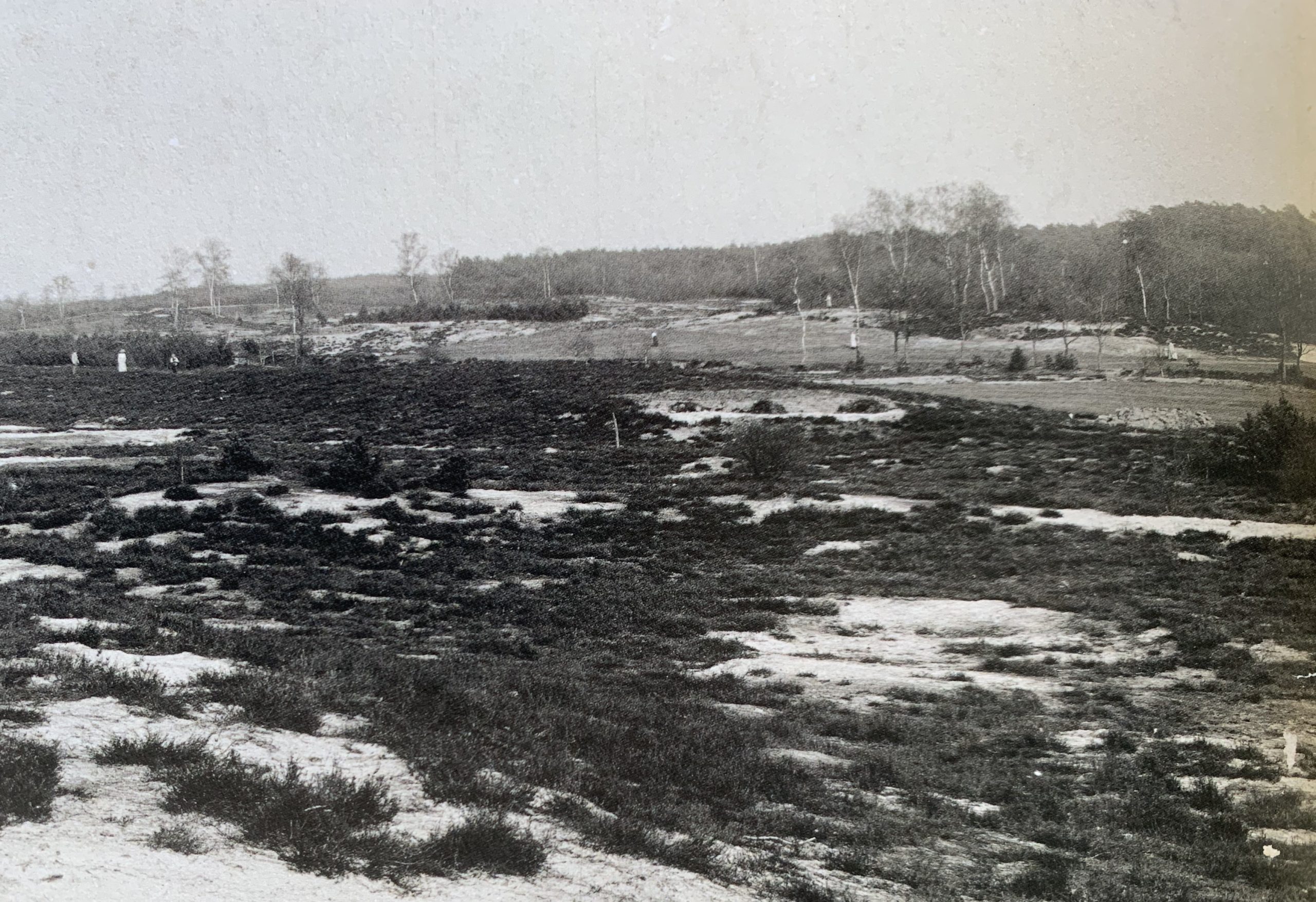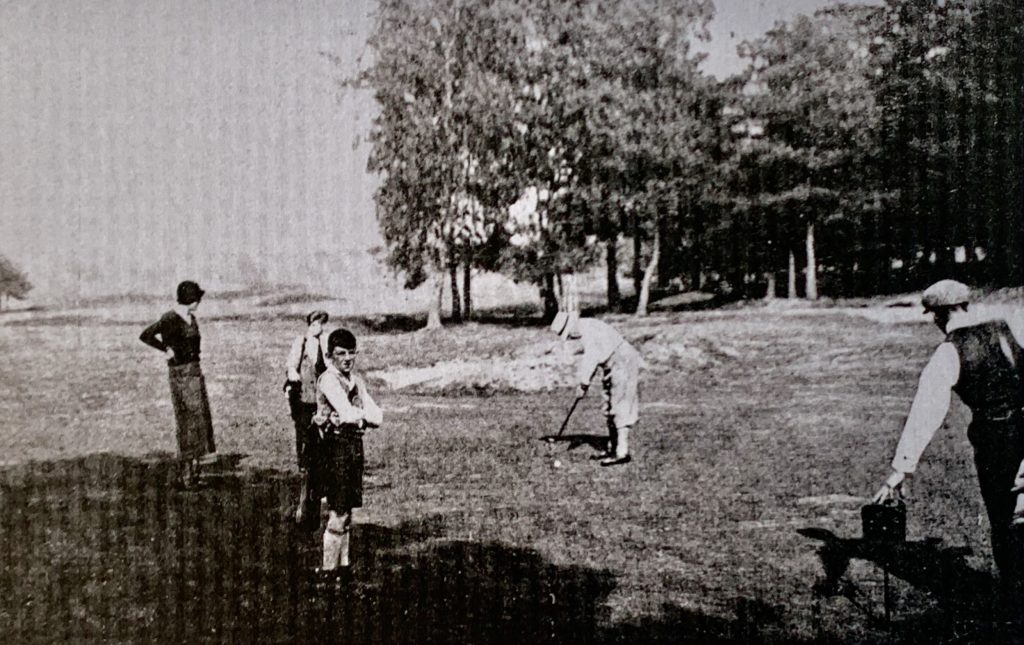
HISTORY
As early as 1895, as described in the 100-year memorial book, Frits (F.H.) baron Huyssen van Kattedijke wished to lease pieces of land from the Velpse Geërfden (Velp's heathland estate) behind the Boersallee to be used for the construction of a 9-hole golf course next to and on the grounds of Rosendael Castle. The fact that the terrain bordered on the Beekhuizen estate is evident from the text: 'Ball played (hole 3) in wood of Beekhuizen, on the bank or in the ditch is out of bounds'. In 1908 the Rosendaelsche Golfclub moved to the Delhuijzen estate on the Apeldoornseweg in Arnhem.

An author of the magazine "Golf" described course in 1939 as follows: "On the beautifully undulating terrain with its tall wood and soft green fairways, the expert hand of Mr. Del Court has gradually created a golf course, which, no matter how often one goes around it, never gets boring and, due to the great variety of its natural features, has a special charm in every season and makes the round a great pleasure for the golfer." Initially, the fairway was kept short by a flock of sheep that found shelter in the sheep pen. After the flock was discontinued, the sheep pen was used as a storage area. Mowing was done with a horse-drawn mower. The rough along the course was tough and was described as follows: "Between the herentee of the first hole and the fairway was a large heath with heather as thick as a pinky finger and up to knee height. The ball could be found with the help of the caddie, but was unplayable three out of four times and so ... back to the tee."
In 1975, work began to expand course to eighteen holes. British architect Frank Pennink designed a beautiful course and on May 21, 1977, the new 18-hole course opened. In 1982 the playing order was changed: the first nine and the second nine were swapped, initially at the request of the organizers of the St. Andrews Trophy at the Rosendaelsche: it was "undesirable" to finish on a par 3.
Only in 2014 did course get its current shape; designed by German course architect Christoph Staedler: two new holes, a number of "flattened" fairways, bunker and green modifications and a spacious practice area. This renovation, carried out in one golf season, involved many things: protected badgers and badger setts, the exchange of tree-felling with replanting of heathland, as well as archaeological research.